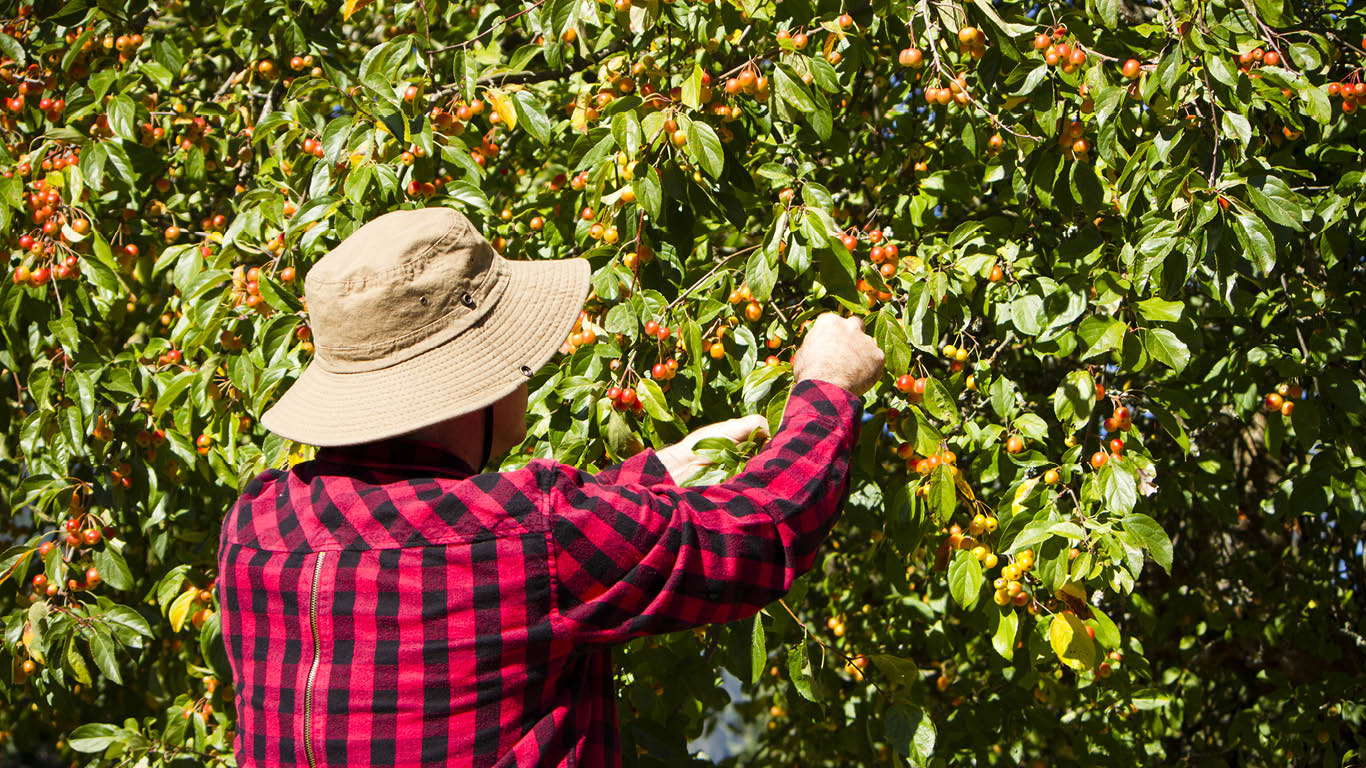
Every year, employees in the agriculture sector produce much of the fresh food consumed by Canadians.
The agriculture sector also contributes to the country’s economy, with the value of production totalling $118.6 billion in 2022. Exports from the agriculture sector to abroad reached $36.8 billion in 2022.
So, what do we know about the employees who work in the country’s agricultural operations?
Agricultural workforce largely temporary in nature
Nearly half (49.6%) of the 278,373 (correction) people working in Canada’s agriculture sector were employed on a seasonal basis in 2022, with most working solely during the growing season from May to November. Traditionally, agricultural operators have relied on temporary foreign workers (TFWs) to meet their needs for additional labour at various points in the year.
The sector also employs people on a full-time or part-time basis throughout the year. More than one-third (36.5%) of employees worked full time in 2022, up 2.3% from 2021. Conversely, the number of both part-time (-1.6%) (correction) and seasonal (-0.2%) (correction) employees fell.
Horticulture employs the most workers in agriculture
Horticulture, which includes the production of fruit and vegetables, is a labour-intensive industry; it requires many hands to produce the many fruits and vegetables consumed by Canadians.
While production of horticulture products—which also include non-food products like flowers, plants, and sod—accounted for less than 15% of farm cash receipts in 2022, horticulture operations employed almost half of all employees in the sector.
Greenhouse, nursery, and floriculture operations reported the largest number of workers in horticulture, at 62,047 (correction) in 2022, up 1.7% from 2021. Many of these employees were seasonal, accounting for more than one-fifth (21.8%) of all seasonal employees in the agriculture sector. This likely reflected the seasonal nature of the industry group, as many operations reduce their activities during the winter months.
Vegetable and melon farms reported the second largest number of workers (34,423) (correction) in 2022, down 1.7% from 2021, followed by fruit and tree nut farms (30,263; -2.5%) (correction).
More than half of agriculture workers work in Central Canada
Nearly 150,000 employees (or 53.3% of all agriculture workers in Canada) worked in the agriculture sector in Ontario and Quebec.
Among provinces, Ontario reported the largest number of agricultural workers in 2022 (79,852), up 0.6% from 2021. That province is also one of Canada’s largest agriculture producers, generating $21.8 billion in farm cash receipts in 2022, only slightly behind Alberta ($22.3 billion). Despite generating less revenue than Alberta, Ontario’s agriculture industry employed more than twice the number of agriculture workers than Alberta (38,358 in 2022). This reflected Ontario’s large greenhouse, nursery, and floriculture industry.
Chart 1: Number of agriculture employees, by province, 2022

Description - Chart 1: Number of agriculture employees, by province, 2022
This is a horizontal stacked bar chart.
The title of the chart is “Number of agriculture employees, by province, 2022.”
There are 10 bars, each representing a Canadian province.
The vertical axis represents the provinces, arranged from top to bottom in geographical order from east to west.
The top bar represents Newfoundland and Labrador, the second bar represents Prince Edward Island, the third bar represents Nova Scotia, the fourth bar represents New Brunswick, the fifth bar represents Quebec, the sixth bar represents Ontario, the seventh bar represents Manitoba, the eighth bar represents Saskatchewan, the ninth bar represents Alberta, and the 10th bar represents British Columbia.
The horizontal axis represents the number of agricultural employees, with increments of 10,000.
The horizontal axis starts at 0 and goes until 80,000.
Newfoundland and Labrador has 1,358 agriculture employees.
Prince Edward Island has 4,352 agriculture employees.
Nova Scotia has 6,426 agriculture employees.
New Brunswick has 5,783 agriculture employees.
Quebec has 68,478 agriculture employees.
Ontario has 79,852 agriculture employees.
Manitoba has 17,109 agriculture employees.
Saskatchewan has 23,521 agriculture employees.
Alberta has 38,358 agriculture employees.
British Columbia has 33,135 agriculture employees.
Source(s): Table 32-10-0216-01.
Temporary foreign workers crucial to the agriculture sector
Finding enough employees to work on farm operations is not always an easy task, with the agriculture sector (including forestry, fishing and hunting) facing an average of 14,611 job vacancies in 2022.
TFWs are an important source of additional labour for farm operators and help ensure the continued production of key agricultural goods in Canada.
The agriculture sector employed 64,660 TFWs in 2022, up 6.0% from a year earlier. This was the third consecutive annual increase. These workers accounted for nearly one in four (23.2%) agricultural employees in 2022. More than two in five (41.9%) worked in Ontario, with the province’s greenhouse, nursery and floriculture industry employing more than half (54.6%).
Canada continued to welcome workers predominantly from Central and South America, as more than four in five came from Mexico (44.3%), Guatemala (25.1%) or Jamaica (13.3%). The number of workers from Mexico was up by 1,718 in 2022, the largest increase among countries.
Correction
On April 18, 2024, corrections were made to reflect revisions to annual 2022 number of employees in the agriculture sector.
Related products
Data tables
- Employees in the agriculture sector, and agricultural operations with at least one employee, by province
- Employees in the agriculture sector, and agricultural operations with at least one employee, by industry
- Employees in the agriculture sector, and agricultural operations with at least one employee, by category of farm revenue
- Temporary foreign workers in the agriculture and agri-food sectors, by industry
- Temporary foreign workers in the agriculture sector, by category of farm revenue
- Countries of citizenship for temporary foreign workers in the agricultural sector
Previous release
Definitions, data sources and methods

StatsCAN app
Did you know you can read StatsCAN Plus articles and more on the StatsCAN app? If you’re already using the app, let us know what you think by leaving a review in the App Store and Google Play.
Contact information
For more information, contact the Statistical Information Service (toll-free 1-800-263-1136; 514-283-8300; infostats@statcan.gc.ca) or Media Relations (statcan.mediahotline-ligneinfomedias.statcan@statcan.gc.ca).
